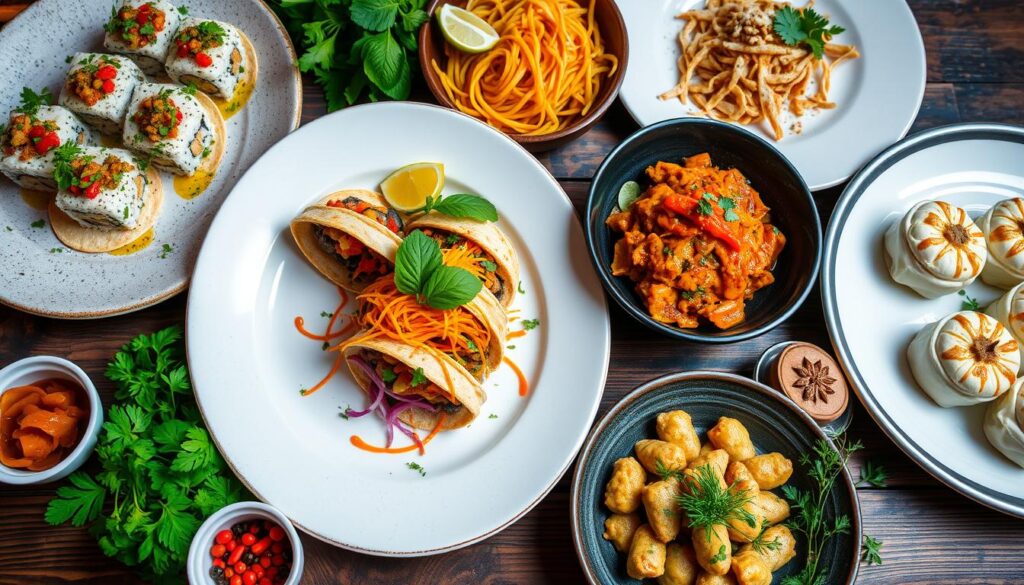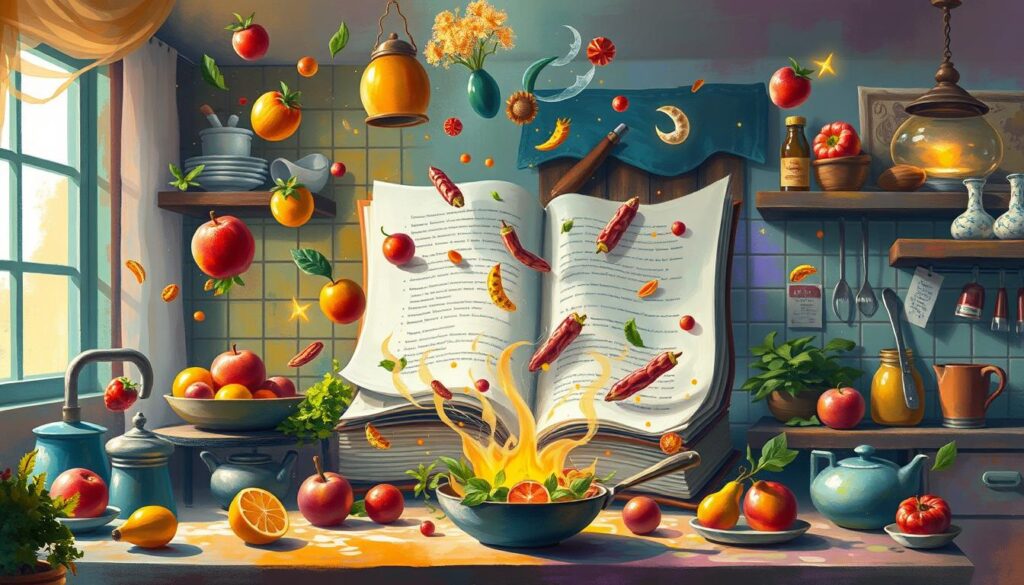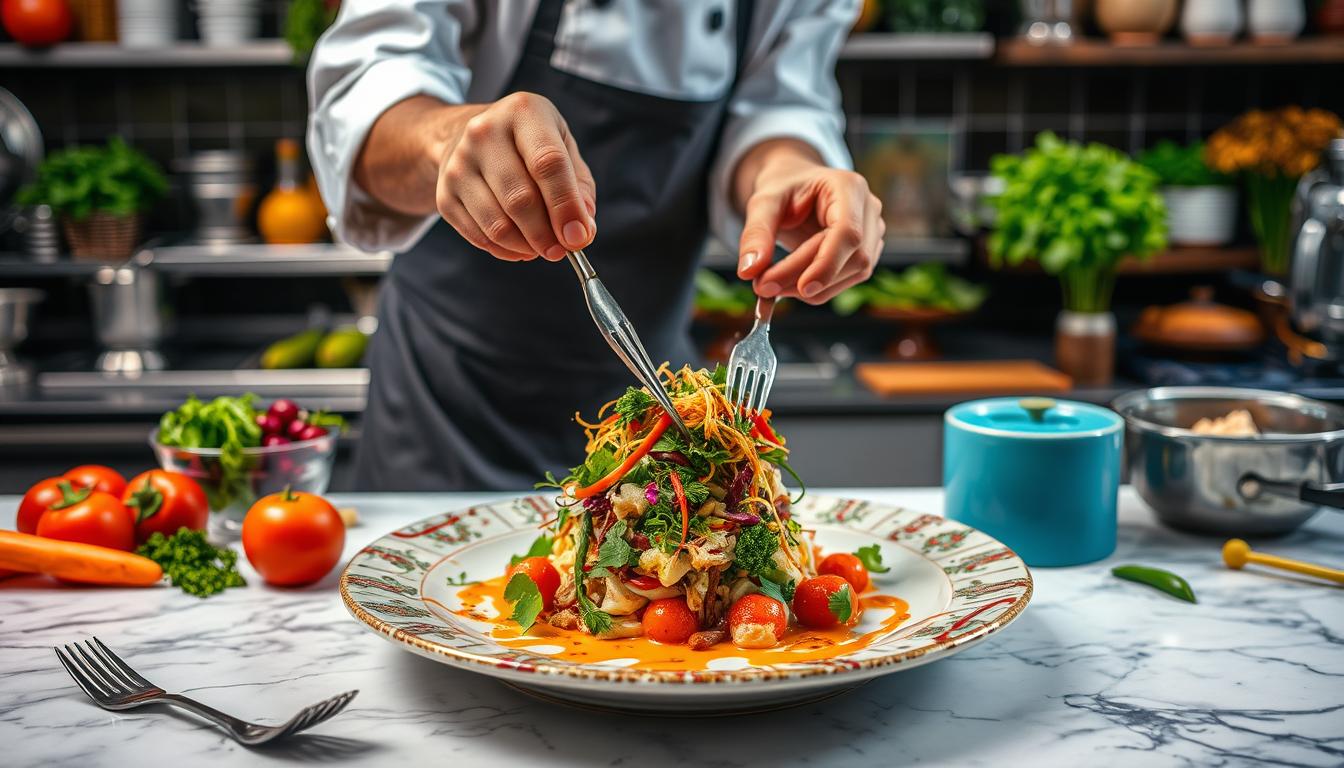Artistic creativity in cooking is the driving force behind exceptional chefs. It’s not just about nourishing the body; it’s about transforming basic ingredients into works of art. In the culinary world, chefs utilize their artistic creativity alongside technical skills to design dishes that are both visually captivating and full of flavor. Each plate becomes a canvas, where the artistic creativity of the chef blends flavors, textures, and presentation in perfect harmon
Chefs approach cooking as a true form of artistic creativity, paying attention to every detail—from the choice of ingredients to the arrangement on the plate. They aim to create a multisensory experience that delights the eyes, nose, and taste buds. Whether it’s a delicate sauce, a perfectly seared piece of fish, or an innovative dessert, artistic creativity is essential in transforming food into an unforgettable experience.
At its core, cooking is a blend of science and artistic creativity, where technique meets imagination. At the heart of this fusion lies the chef’s ability to think outside the box, experiment, and push the boundaries of what food can be. Through artistic creativity, chefs transform simple ingredients into culinary masterpieces that go far beyond mere sustenance.
Key Takeaways
- Discover how chefs can combine artistic creativity with their culinary skills to produce visually stunning and flavorful dishes.
- Understand the importance of blending artistic expression with gastronomic expertise to create a truly captivating dining experience.
- Explore the techniques and approaches that chefs can utilize to elevate the art of food presentation and flavor combinations.
- Gain insights into the concept of culinary expressionism and how it can be applied to elevate the culinary craft.
- Delve into the world of fusion cuisine and avant-garde culinary techniques that push the boundaries of traditional gastronomy.
Unleashing Your Culinary Artistry
As a chef, expressing your artistic creativity is essential for refining your skills. One of the best ways to showcase this is through plating. The way a dish looks is integral to the dining experience—it excites the senses and sets the stage for a journey through flavors.
Embracing the Art of Plating
Artistic creativity in plating goes far beyond arranging ingredients on a plate. It involves mixing colors, textures, and shapes to make your dishes visually stunning. Experiment with patterns, different heights, and empty spaces to let your artistic creativity shine and make your dishes stand out.
Exploring Unconventional Flavor Combinations
In artistic creativity in cooking, experimenting with new flavor combinations leads to innovation. Don’t limit yourself to traditional pairings. Mix different ingredients and play with sweet, savory, and umami flavors. This approach will make your dishes more exciting and open up new possibilities for fusion cuisine.
“The true essence of a dish lies not only in its flavors but also in the artistry and craftsmanship that goes into its creation.” – renowned chef, Julia Childe
By mastering plating and trying new flavors, you can show off your culinary artistry. This will make dining with you a special experience. Remember, the kitchen is your canvas. So, don’t be shy to try new things and break the rules of traditional cooking.
| Plating Technique | Description | Visual Impact |
|---|---|---|
| Geometric Arrangement | Arranging ingredients in clean, geometric shapes to create a visually striking presentation. | Precise, modern, and minimalist. |
| Asymmetrical Balance | Placing components of the dish in an asymmetrical layout, creating a sense of dynamic tension and visual interest. | Dynamic, artistic, and unexpected. |
| Elevated Stacking | Building layers of ingredients vertically to create height and dimension on the plate. | Impressive, sculptural, and visually captivating. |
How to Combine Artistic Creativity with Gastronomy as a Chef?
Being a chef means balancing creativity with the technical side of cooking. Chefs can use many techniques to merge these two areas. Let’s look at how to mix artistic flair with cooking skills.
One way is to try unconventional flavor combinations. Chefs can make dishes that amaze by using new pairings. They can mix different textures and tastes to create something unique.
The power of artistic creativity in plating is indispensable. Chefs can make their dishes visually stunning by arranging them thoughtfully, using color, shape, and texture to elevate the plate and enhance the overall meal experience.
| Technique | Description | Example |
|---|---|---|
| Unconventional Flavor Combinations | Pairing unexpected ingredients to create unique taste profiles | Combining sweet watermelon with savory feta and balsamic |
| Artistic Plating | Arranging the components of a dish to create a visually stunning presentation | Layering colors and textures to create a symmetrical and balanced plate |
Using these methods, chefs can mix their creativity with cooking. This way, they can impress diners and make meals more special.
“Cooking is an art form, and as chefs, we have the opportunity to express our creativity through the medium of food.”
Mastering the Principles of Culinary Expressionism
In the world of artistic creativity and culinary expressionism, chefs see cooking as a medium to express themselves. They use their skills to create dishes that are not only delicious but also visually stunning. This approach allows chefs to fully showcase their gastronomic imagination through artistic creativity.
At the heart of this is seeing food as a canvas for art. Chefs treat each dish as a blank page, ready to be filled with color and emotion. They use avant-garde culinary techniques to make food that tells a story or surprises the taste buds.
The way food is presented is also key. Chefs pay close attention to how each ingredient looks on the plate. They aim to create a feast for the eyes as well as the taste buds. The mix of colors, textures, and flavors is like a symphony.
Lastly, chefs love to try new and unusual flavor combinations. This bold approach lets them create dishes that are both exciting and memorable. It’s all about exploring new tastes and understanding how they work together.
“Culinary expressionism is not just about creating delicious food; it’s about using the medium of gastronomy to evoke emotions, tell stories, and challenge the diner’s perceptions.” – renowned chef, [Author Name]
By embracing culinary expressionism, chefs turn their kitchens into art studios. They use their skills to create dishes that are not just tasty but also visually stunning. This way, they can make every meal a journey of discovery and delight.
Fusion Cuisine: A Canvas for Gastronomic Creativity
Fusion cuisine is a world where chefs can show off their creativity. They mix different cultural flavors and update old dishes. This makes traditional food look new again.
Blending Cultural Influences
Artistic creativity is at the heart of fusion cuisine, where chefs mix global flavors and methods to create innovative dishes. They blend the spices of the East with the bold tastes of the West, showcasing their artistic creativity in every bite and offering a feast for the senses.
Reinventing Classic Dishes
The magic of fusion cuisine is in its fresh take on old favorites. Chefs add new ingredients to classic recipes, making them exciting again. This way, they celebrate creativity in the kitchen, turning simple dishes into works of art.

By mixing cultures and updating old dishes, chefs create a world of food that’s both beautiful and tasty. This approach makes dining a journey of discovery. It shows how fusion cuisine can make us see food and art in a new light.
The Art of Storytelling Through Food
Culinary masterpieces are more than just tasty dishes; they tell stories. Chefs use their dishes to share personal tales, cultural traditions, and even social views. This turns eating into a journey for their guests.
By picking the right ingredients and presentation, chefs tell stories that touch our hearts and minds. Imagine enjoying a dish that reminds you of your grandmother’s cooking, or trying a mix of different cooking traditions. Chefs take us beyond just eating, into a world of deep connection and understanding.
Stories in food can inspire, teach, and even challenge what we think. From how to make steamed artichoke hearts to how to make ice cream at home, each dish tells a chef’s story. It’s like a painting of their life and views.
By telling stories through food, chefs make dining more than just eating. They connect us to culture and our shared human experiences. As we enjoy these dishes, we join the chef’s story. We learn the power of comfort foods to make at home and how to make ice cream to feed our souls.
“Food is our common ground, a universal experience.” – James Beard
Avant-Garde Culinary Techniques
Chefs are always exploring new ways to cook. They use avant-garde techniques that amaze everyone. Molecular gastronomy is a big part of this, changing how we think about food.
Molecular Gastronomy Demystified
Molecular gastronomy is all about the science of cooking. It helps chefs make amazing dishes, like Michelin star-worthy purées. They can also mix flavors in new and exciting ways.
It’s all about using new methods to change food. Chefs use heat and pressure to alter ingredients. This makes food that’s unlike anything you’ve ever tasted before.
| Technique | Description | Application |
|---|---|---|
| Spherification | The process of shaping liquids into small, edible spheres | Creating caviar-like pearls of juice, purées, or other liquids |
| Emulsification | Combining immiscible liquids, such as oil and water, into a stable mixture | Producing creamy, luxurious textures in dishes |
| Sous Vide | Slow-cooking food in a precisely controlled water bath | Achieving perfectly cooked, tender proteins and vegetables |
Learning these molecular gastronomy techniques opens up a world of possibilities. It makes food more exciting and changes how we eat. The future of food is looking very promising.
Plating as an Extension of Artistic Expression
Chefs are now using artistic plating styles to make dining more exciting. They mix colors and add striking elements to make meals look and taste great. This turns a simple meal into a feast for the eyes and taste buds.
Creating a beautiful plate is like making art. Chefs balance and arrange each dish carefully. They use different textures and colors to make the plate pop.
Colors play a big role in artistic plating styles. Chefs use colors to set the mood and make the meal special. Bright colors can make a dish stand out, while soft colors add elegance.
Chefs also tell stories with their food. Each dish is a visual journey that shows the chef’s creativity and culture. This makes dining a full experience, not just eating.
The art of plating is now a key part of a chef’s work. It lets them create dishes that amaze and delight everyone who tries them.
Nurturing Your Gastronomic Imagination
As chefs, our journey is more than just following recipes. It’s about exploring the gastronomic imagination. This spark lets us break free from kitchen norms and explore new culinary heights.
Breaking Free from Conventional Boundaries
To grow our gastronomic imagination, we must see ourselves as artists. We need to be brave and try new things. This means mixing up flavors, rethinking old dishes, or using science in our cooking.
Heston Blumenthal, a famous British chef, is a great example. He runs The Fat Duck and is known for his innovative approach to food. He draws from science, history, and psychology to create amazing meals.
“Cooking is not about just joining the dots, but rather about exploring the nature of the ingredients themselves.”
– Heston Blumenthal
YouTube stars like Nigel Ng, or Uncle Roger, also show how chefs can share their views online. They react to cooking shows and trends, offering fresh insights. This inspires others to explore their own gastronomic imagination.

Let’s keep pushing kitchen limits and see ourselves as artists. By nurturing our gastronomic imagination, we open up a world of culinary wonders. This elevates the art of cooking to new levels.
Collaboration: The Key to Culinary Innovation
In the world of innovation, working together is key. It drives amazing changes in the food world. Chefs, cooks, and creative people team up, opening doors to new tastes and cooking styles.
Working together means sharing ideas and trying new things. Chefs with artists, scientists, or other chefs can make bold dishes. These dishes excite our taste and senses.
Collaboration also builds a strong community. Chefs share their skills and learn from each other. This helps everyone grow and improve, making the whole food world better.
| Benefit | Description |
|---|---|
| Cross-pollination of Ideas | Collaboration allows chefs to explore new flavor combinations and push the boundaries of traditional gastronomy. |
| Community Growth | Sharing knowledge and insights within the culinary community fosters a spirit of mutual learning and improvement. |
| Innovative Dishes | By bringing together diverse perspectives and skill sets, chefs can create truly unique and captivating culinary experiences. |
As chefs keep working together, the future of food looks bright. The mix of everyone’s creativity and skills will lead to amazing dishes. This will take cooking to new levels.
Conclusion: Embracing the Artistry of Gastronomy
The culinary world is full of chances for chefs to show their creative side. They can learn about culinary expressionism and try new, bold techniques. This makes the world of food a place where artists can explore and innovate.
Chefs can make dishes look amazing, mix different cultures, and tell stories through food. This way, they can amaze and inspire their guests. By always trying new things and improving, these chefs change the way we enjoy eating.
We invite you to dive into the world of culinary artistry. Let your gastronomic creativity shine, and show off your chef’s creative flair. Doing this will not only make food art better but also bring joy and wonder to those who taste your creations.

Comments are closed.